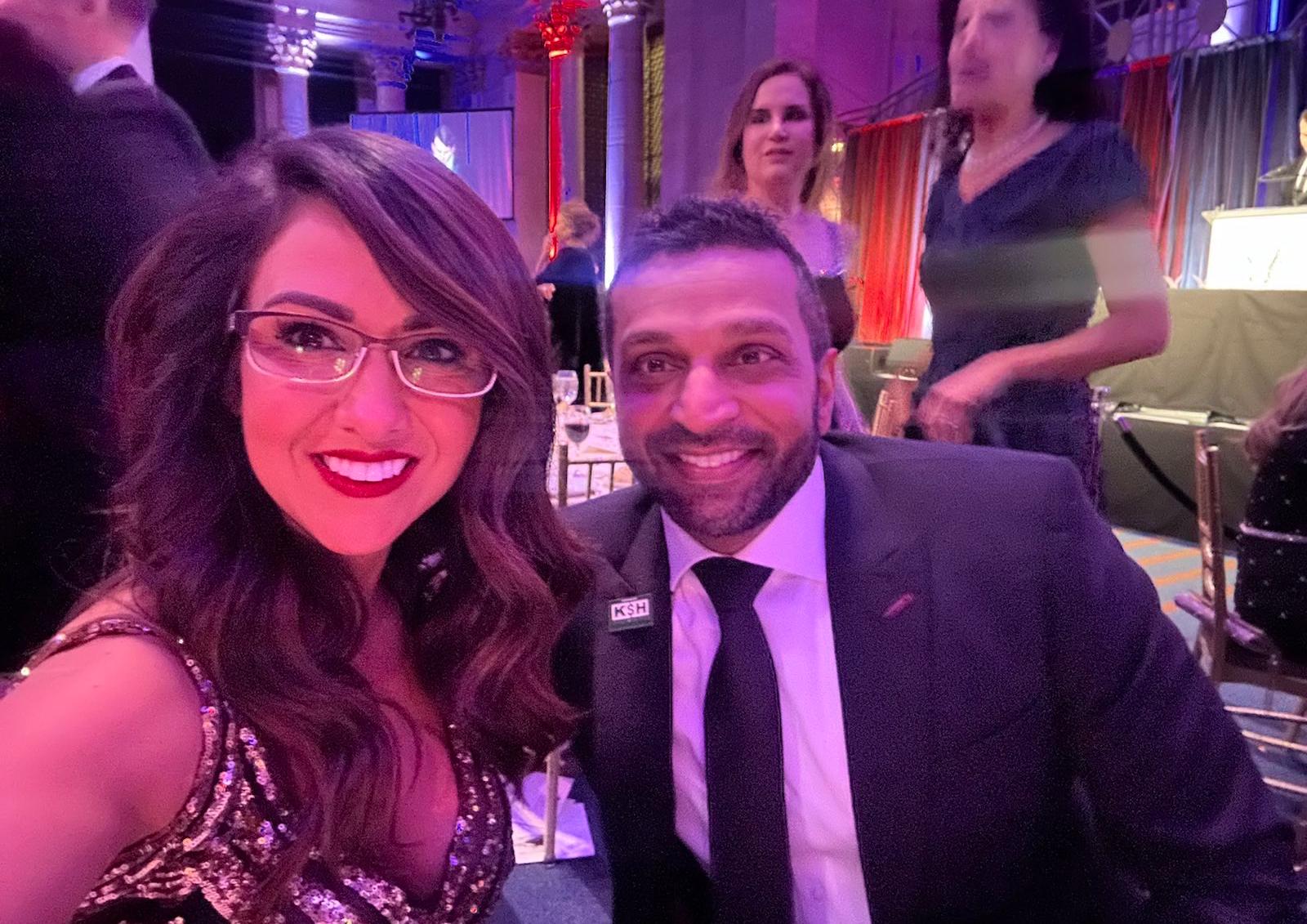Kash Patel's Eye Condition: The Untold Story + Prevention Tips
Ever wondered what goes on behind the scenes with figures in the public eye? The latest buzz surrounds Kash Patel and an unexpected topic: his eye health. Is this just idle gossip, or is there a real story here? Dive in to uncover the truth about Kash Patel's eyes, a story blending intrigue and medical insight that you won't find elsewhere.
Kash Patel, a name synonymous with political discourse and a prominent figure during the Trump administration, finds himself in the headlines again, but this time the focus shifts from policy to personal health. This isnt merely about rumors; its a look at the medical realities and how they potentially impact his life. Were taking a closer look at Kash Patel's eyes condition, offering details as comprehensive as possible. From the possible origins and symptoms to available treatments, we aim to provide a complete picture.
| Attribute | Details |
|---|---|
| Full Name | Kashyap "Kash" Patel |
| Date of Birth | January 25, 1974 |
| Place of Birth | London, England |
| Nationality | American |
| Education | University of Richmond (BA), Pace University School of Law (JD) |
| Profession | Lawyer, Political Commentator, Former Government Official |
| Career Highlights |
|
| Controversies | Involvement in investigations related to the Trump-Russia affair and his role in disseminating information. |
| Website | Official Website |
Before delving into the specifics of what might be affecting Kash Patel's vision, its essential to understand the basics of eye health. The eye, a complex organ, can be subject to various conditions that range from minor irritations to severe, vision-threatening diseases. The cornea, the clear front surface of the eye, and the retina, the light-sensitive layer at the back, are particularly vulnerable.
- Evangeline Lilly Young From Lost To Role Model Fun Facts
- Kirsten Barlow The Untold Story Of A British Tv Icon
Sources suggest that Kash Patels eye condition might involve either the cornea or the retina. Corneal issues could range from superficial abrasions to more complex dystrophies, while retinal problems can include everything from minor tears to full detachments. The spectrum of potential diagnoses is wide, and understanding the possibilities is crucial before jumping to conclusions. Let's delve deeper into potential eye conditions.
Corneal abrasions, for instance, are common and can result from something as simple as rubbing the eye too vigorously or getting a foreign object lodged beneath the eyelid. These abrasions can cause significant discomfort, redness, and blurred vision, but typically heal within a few days with proper care. Treatment often involves antibiotic eye drops to prevent infection and sometimes a patch to protect the eye during healing. While bothersome, corneal abrasions are generally not a long-term threat to vision.
Retinal detachment, on the other hand, is a far more serious condition. It occurs when the retina, which is responsible for capturing images and sending them to the brain, separates from the underlying tissue. This can lead to permanent vision loss if not treated promptly. Symptoms of retinal detachment include a sudden increase in floaters (small specks that drift across the field of vision), flashes of light, and a shadow or curtain obscuring part of the vision. Risk factors for retinal detachment include aging, nearsightedness, a family history of the condition, and previous eye surgery or trauma. Treatment typically involves surgery to reattach the retina, and the success rate is generally high if the detachment is caught early.
- Lily Collins Facts About The Actress We All Love
- Unlock The Power Of Telegram Channel Links The Complete Guide
Glaucoma is another concerning possibility. It encompasses a group of eye diseases that damage the optic nerve, which connects the eye to the brain. Often, this damage is caused by increased pressure inside the eye, though it can also occur with normal eye pressure. Glaucoma is often called the "silent thief of sight" because many people don't experience symptoms until significant vision loss has already occurred. Regular eye exams are crucial for detecting glaucoma early, as treatment can help slow its progression and prevent further vision loss. Treatment options include eye drops, laser surgery, and traditional surgery, all aimed at reducing eye pressure.
Cataracts, a clouding of the natural lens of the eye, are incredibly common, especially with aging. While not as immediately threatening as retinal detachment or glaucoma, cataracts can significantly impact vision, making it blurry, hazy, or less colorful. Many people describe it as looking through a frosted window. Cataracts typically develop slowly over time and can eventually interfere with daily activities such as reading, driving, and recognizing faces. The good news is that cataracts are treatable with surgery, which involves replacing the clouded lens with a clear artificial lens. Cataract surgery is one of the most common and safest surgical procedures performed worldwide.
Beyond these, there are other potential culprits. Diabetic retinopathy, a complication of diabetes, can damage the blood vessels in the retina, leading to vision loss. Macular degeneration, particularly age-related macular degeneration (AMD), affects the central part of the retina (the macula), causing blurry or distorted central vision. Dry eye syndrome, while not directly vision-threatening, can cause significant discomfort and blurred vision due to insufficient tear production. Uveitis, an inflammation of the middle layer of the eye, can cause redness, pain, blurred vision, and light sensitivity.
Given the array of potential conditions that could be affecting Kash Patel, the question naturally arises: how might such a condition develop? The origins of eye problems are multifaceted, often involving a combination of genetic predispositions, environmental factors, and lifestyle choices.
Genetics play a significant role in many eye diseases. Conditions like glaucoma, macular degeneration, and certain types of retinal dystrophies can be inherited, meaning that individuals with a family history of these conditions are at a higher risk of developing them themselves. Genetic testing can sometimes help identify individuals at risk, allowing for earlier and more proactive management.
Environmental factors are also crucial. Prolonged exposure to ultraviolet (UV) radiation from sunlight can increase the risk of cataracts and macular degeneration. Wearing sunglasses that block 100% of UV rays is therefore an essential preventive measure. Air pollution, particularly in urban areas, can contribute to dry eye syndrome and other inflammatory eye conditions. Smoking is a major risk factor for macular degeneration, cataracts, and optic nerve damage. A diet lacking in essential nutrients, such as vitamins C and E, zinc, and omega-3 fatty acids, can also impair eye health.
Lifestyle factors, especially in the modern era, have a profound impact. The increased use of digital devices, such as computers, smartphones, and tablets, has led to a surge in digital eye strain. Prolonged screen time can cause dry eyes, blurred vision, headaches, and neck and shoulder pain. Taking regular breaks from screens, using proper lighting, and maintaining good posture are all important strategies for mitigating digital eye strain.
Age-related changes are another significant contributor. As we age, the structures of the eye naturally undergo changes that can increase the risk of various eye conditions. The lens of the eye becomes less flexible, making it harder to focus on near objects (presbyopia). The risk of cataracts and glaucoma increases. The retina can thin and become more susceptible to damage. Regular eye exams are especially important for older adults to detect and manage age-related eye conditions.
Trauma to the eye, whether from an accident or injury, can have immediate and long-lasting effects. Corneal abrasions, retinal detachments, and glaucoma can all result from eye trauma. Protective eyewear, such as safety glasses or goggles, is essential for preventing eye injuries in high-risk environments, such as construction sites or sports fields.
In Kash Patels specific case, it's speculated that his demanding work schedule and the long hours spent working might have contributed to his condition. Extended periods of screen time are known to strain the eyes and potentially exacerbate underlying issues. Regardless of the exact cause, the situation underscores the importance of prioritizing eye health in all aspects of life.
Taking preventive measures is crucial. Simple habits can make a significant difference in maintaining good eye health. The 20-20-20 rule is a useful strategy for reducing digital eye strain: every 20 minutes, look at something 20 feet away for 20 seconds. This allows the eye muscles to relax and reduces the risk of eye fatigue. Wearing sunglasses that block 100% of UV rays is essential for protecting the eyes from sun damage. Regular eye exams are vital for detecting eye conditions early, when treatment is most effective. A balanced diet rich in vitamins and antioxidants, such as leafy green vegetables, fruits, and fish, provides the nutrients needed for optimal eye health.
Treatment options for eye conditions are diverse and depend heavily on the specific diagnosis. Medications, such as eye drops and oral medications, are often used to manage conditions like glaucoma, uveitis, and dry eye syndrome. These medications can reduce inflammation, lower eye pressure, and increase tear production.
Surgery is sometimes necessary to correct structural issues or remove cataracts. Cataract surgery involves replacing the clouded lens with a clear artificial lens. Surgery for retinal detachment aims to reattach the retina to the back of the eye. Laser surgery can be used to treat glaucoma, diabetic retinopathy, and other retinal conditions.
Vision therapy and rehabilitation exercises can improve eye function and visual skills. These therapies are often used to treat conditions like amblyopia (lazy eye), strabismus (crossed eyes), and convergence insufficiency (difficulty coordinating the eyes when reading). Assistive devices, such as magnifiers and screen readers, can help individuals with low vision to maintain their independence and quality of life.
The financial aspects of eye care can be a significant concern for many people. Insurance coverage for eye treatments varies widely depending on the specific policy and the nature of the treatment. Some insurance plans cover routine eye exams and basic procedures, while others require additional riders for more complex treatments.
For those without insurance, there are often affordable options available through community clinics and government programs. These programs may offer free or low-cost eye exams, eyeglasses, and other vision care services. Its essential to research and explore available resources to find the right fit for individual needs.
Expert opinions from ophthalmologists and eye specialists carry considerable weight when discussing conditions like Kash Patels. These professionals emphasize the importance of early detection and proactive management to prevent further complications. Regular eye check-ups are crucial, particularly for individuals with demanding lifestyles or a family history of eye diseases.
Ophthalmologists undergo years of rigorous training to understand the complexities of the human eye. Their expertise ensures that patients receive the best possible care, whether it's Kash Patel or anyone else. Consulting a professional is always the best course of action when there are concerns about eye health.
When it comes to the personal impact of an eye condition, the effects can be profound. Depending on the severity and nature of the condition, it can affect daily activities, work, and overall quality of life. While Patel hasnt disclosed extensive details, its likely that his condition requires some adjustments in his daily routine. This might include using specialized glasses or contacts, scheduling more frequent check-ups, and modifying his work environment to reduce eye strain.
Adapting to life with an eye condition involves a combination of medical treatments, lifestyle modifications, and the use of assistive devices. Assistive devices such as magnifiers, screen readers, and specialized lighting can help individuals with low vision to maintain their independence and continue to engage in their favorite activities. Adjusting lighting and workspace ergonomics can reduce eye strain and improve comfort. Staying informed about the latest treatments and technologies allows individuals to make informed decisions about their care.
The future of Kash Patels eye condition remains uncertain, but with proactive care and appropriate medical interventions, there is reason to be optimistic. His experience serves as a reminder of the importance of prioritizing self-care and preventive health measures. Regardless of professional demands or personal obligations, taking care of ones eyes should always be a priority.
Kash Patels situation highlights the importance of regular eye exams, staying informed about potential risks and treatments, and seeking professional help when needed. These simple steps can make a world of difference in maintaining good eye health and preventing vision loss.
What we can learn from Kash Patel's experience is universally applicable. Prioritizing our eye health is paramount, irrespective of our background or profession. By integrating preventive measures, staying informed, and seeking timely medical advice, we can all safeguard our vision and well-being.
- Untold Story Kira Lord Sith Dathomirian And More
- Decoding The Surviving Princesss Laughter Untold Stories Revealed

Kash Patel Confirmation

Kash Patel Eyes 's Condition A Comprehensive Guide

Is Kash Patel Married? Inside Trump's FBI Pick's Family Life